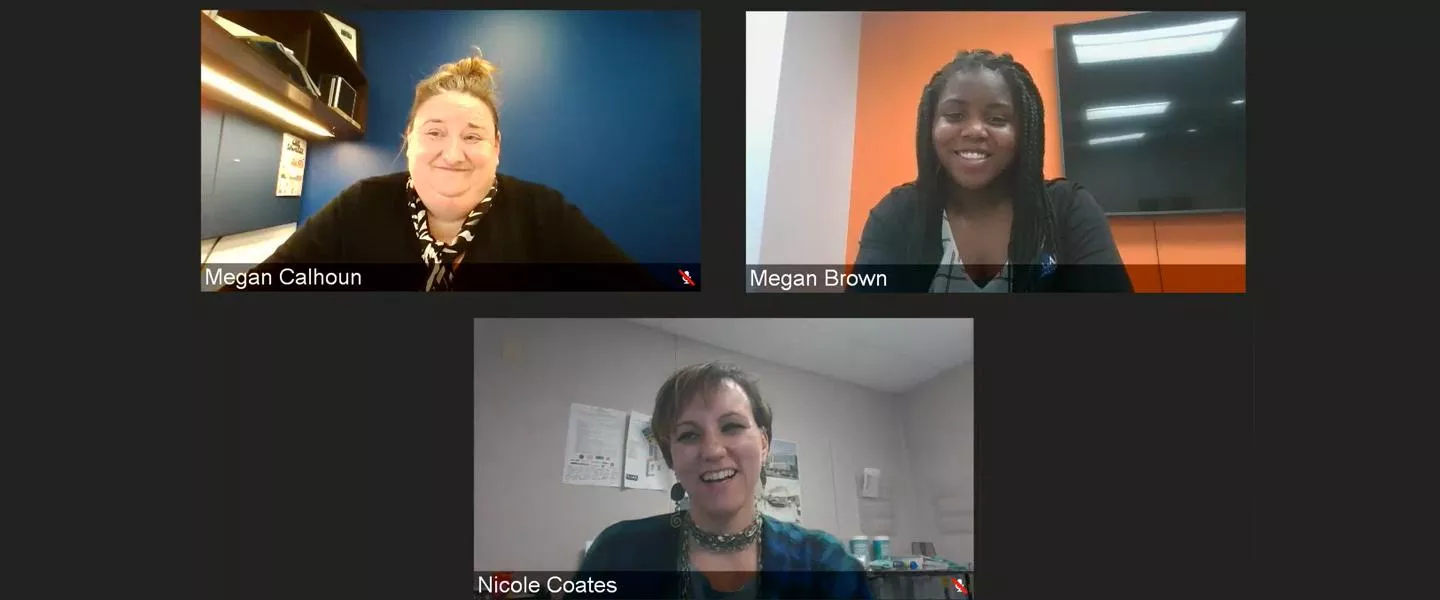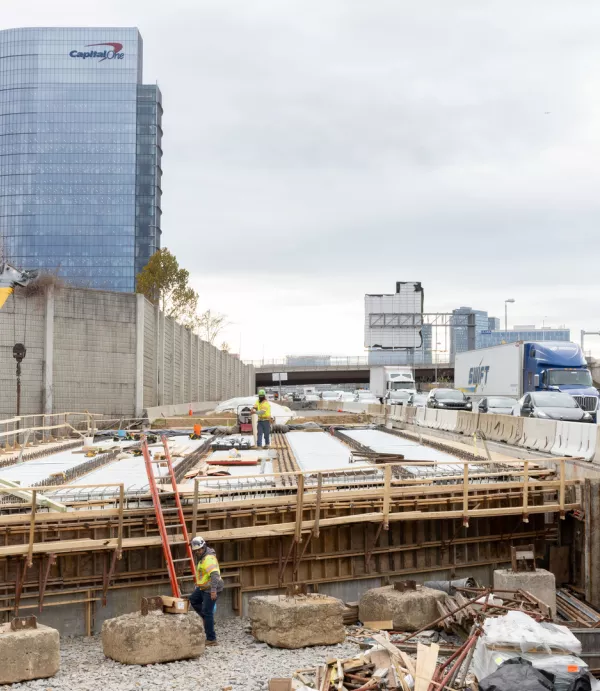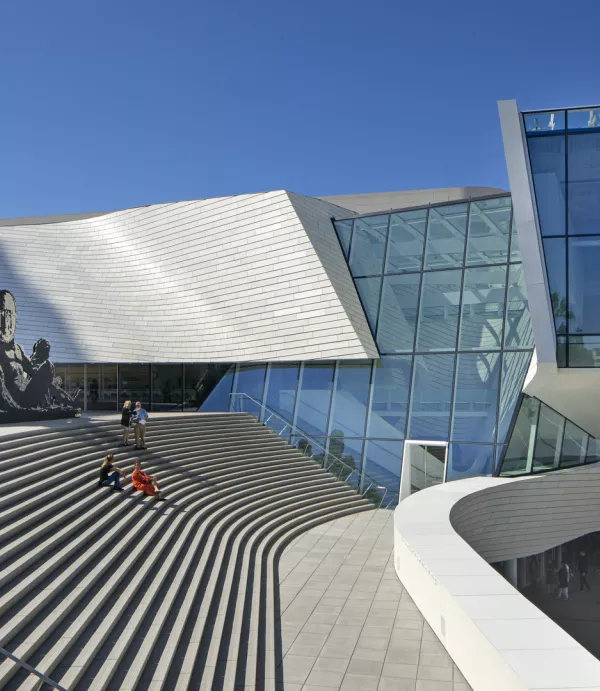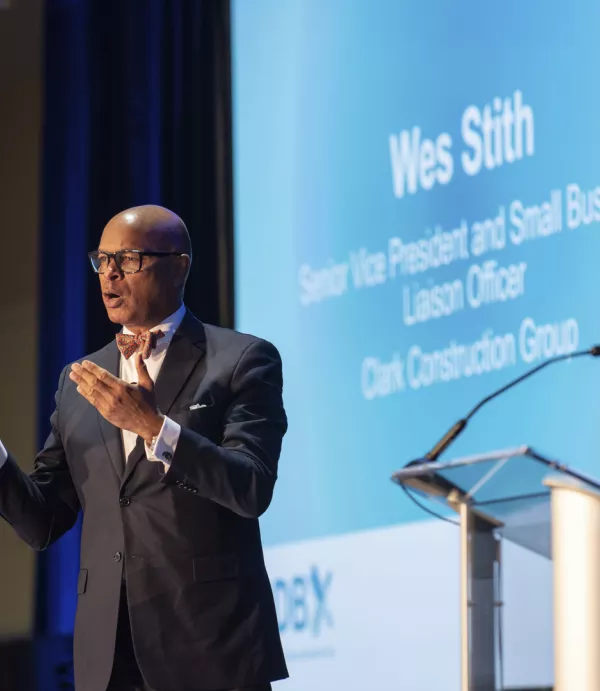A Tale of Two Engineers: Megan Calhoun and Megan Brown
May 14, 2021

What does the construction industry look like viewed through the unique lenses of two women at Clark in different stages in their careers?
Megan Calhoun, a vice president at Clark with two decades of industry experience, and Megan Brown, a project engineer who joined Clark two years ago, recently participated in a discussion hosted by the Clark Women's Insight Network (WIN), to share their perspectives on the construction industry.
The discussion was moderated by Nicole Coates, a senior project manager at Clark, and a founding member of WIN.
Describe your role.
Megan Calhoun: I am responsible for leading Clark’s healthcare operations in Southern California where I help pursue new work and support project development and delivery activities. My favorite part of my role is the opportunity to work with the incredible talent that makes up the Clark team!
Megan Brown: I am a project engineer on the Metropolitan Park 6,7,8 project, the future home of Amazon’s Virginia headquarters. In my role, I help manage concrete and various finishes (drywall, rough carpentry, millwork, etc.) for the project’s two, 22-story office towers.
What drew you to a career in the construction industry?
MC: My early experiences working with my father on home construction projects got me interested in construction. I have such fond memories working with him to make improvements to my childhood home including adding a 1,700-square-foot addition as well as installing new siding and new roofing on the entire house. Also, I used to be paranoid to drive over high-span bridges, so I was compelled to conquer my fear by figuring out how they were designed and constructed!
MB: Growing up, I was always intrigued by cities and the built environment. I was fascinated by how a concept could be transformed into real-life structures. Once I decided engineering was the best path forward for my career, construction felt like a natural fit. I love being able to drive past a structure and say that I helped build it.
What qualities do you need to be successful in the industry?
MC: Be tenacious, be a self-starter, have a strong work ethic, and have the ability to communicate effectively.
MB: Be a team player, have patience, and be able to persevere through various challenges.
What makes you proud of the work you do?
MC: I’m proud to work for a company that builds projects that help transform the communities in which we work and live, all while maintaining a safety-first culture and living by the mantra of “always doing the right thing.”
MB: I am proud of how our projects help strengthen our communities. Construction generates thousands of jobs, not to mention opportunities for small and diverse businesses. It’s also very fulfilling to be able to help deliver projects that are integral to our everyday lives.
How have you seen construction technology evolve throughout your career at Clark?
MC: The biggest evolution has been the elimination of paper and a complete transition to digital documentation. When I started, we still developed pictures to document conditions. Now we take digital scans of spaces that look like videos, and even get measurements based on those images!
The other big change has been the “collaboration” movement. The industry used to be much more adversarial, with contractors, trade contractors, owners, and designers all in their silos pitching issues back and forth. With the design-build and integrated project delivery methods, these barriers have been eliminated to allow for the free flow of ideas to find the best solution for the project – not just one stakeholder. You may think, “what does this have to do with technology?” While technology wasn’t the primary driver for this shift, it helped expedite it. The various collaborative platforms (i.e., Google Docs, BIM 360, Miro, Trello) have provided a virtual environment where information can be shared in real-time.
What was the biggest challenge you have ever encountered in your job and how did you solve it?
MC: I’m not sure I can pick one, but I can say there is a commonality in how it was solved. I sought and received help from coworkers, peers, direct reports, and supervisors. The saying goes that “it takes a village” and it really does!
What advice would you give to the 20-year-old version of yourself?
MC: Don’t worry, it will all work out! Don’t be afraid to ask questions and speak up for yourself. You’ve got this!
How do you think construction can attract more women?
MB: I think companies can do more talks, conferences, and seminars with women in college. There are so many amazing minds in construction and hearing from them early on can inspire other women to join the industry. There are a lot of organizations we can join once we are in the industry, but it would be great to expand those to colleges to help attract more female talent.
How do you envision the future as a woman in construction?
MB: I think the future is very bright. Women are taking more leadership roles in different sectors of construction including general contracting, design, engineering, craft work, consulting, etc. It is empowering to see and brings hope that the future is only looking up from here.
What excites you about this field?
MB: I am excited about all the positive changes that can be made through construction. Construction can impact so many different aspects of a community, and even though it can be messy and look chaotic, something beautiful always shines through at the end. In this field, some of the smallest changes can make the biggest difference in the future.


